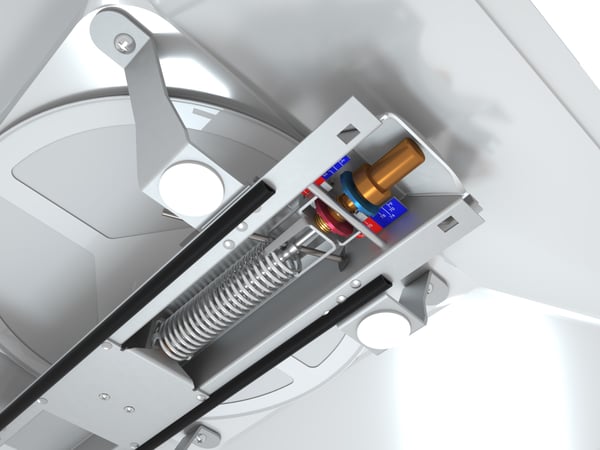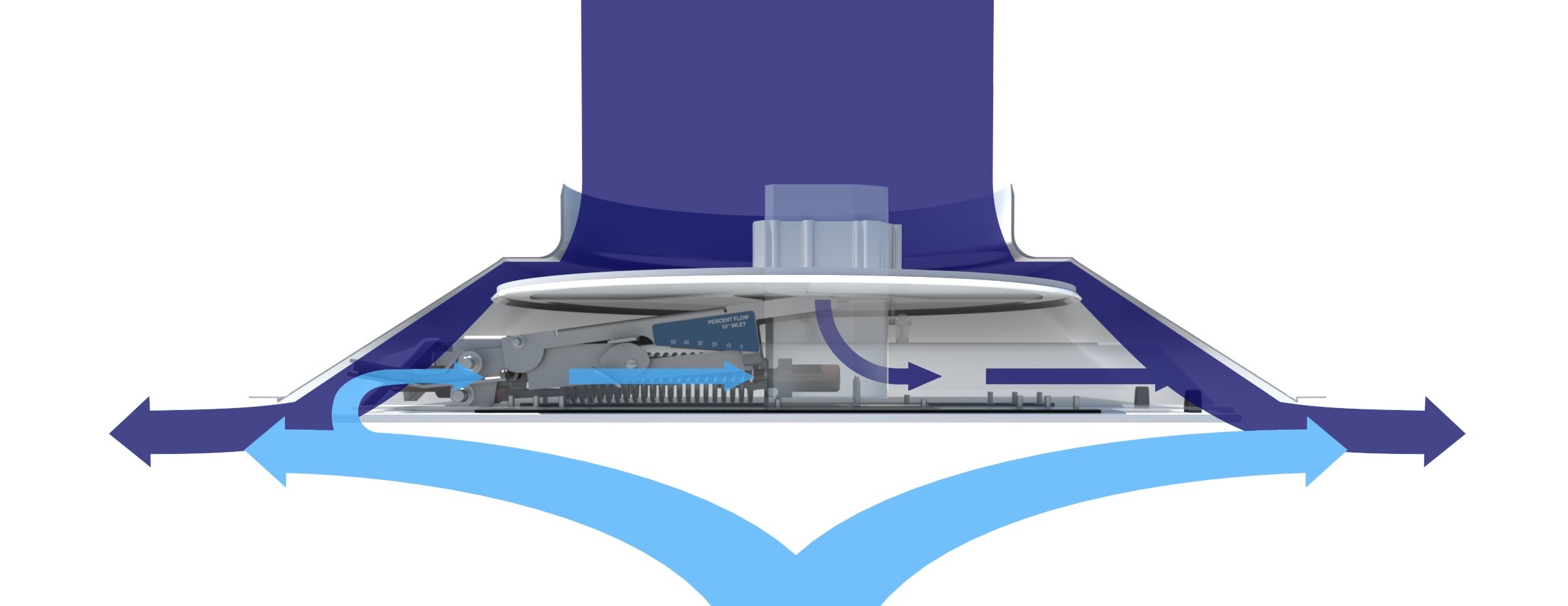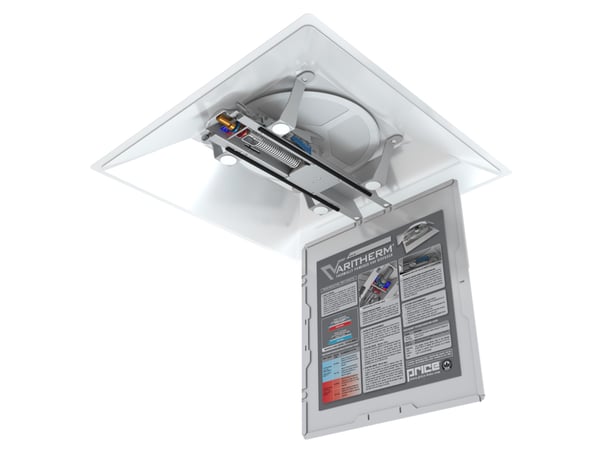Exploring the Inner Workings of Mechanical VAV Diffusers
In a previous blog post, we discussed variable air volume (VAV) diffusers and how these simple devices create small-zone comfort. VAV diffusers are available in two basic types: mechanical (thermal) and digital (electric). In this post, we take a closer look at the mechanical version, which requires no electrical or pneumatic connections and is powered by the temperature of the air.
 |
| Price’s Varitherm VAV diffusers installed in the ceiling of an open office |
Thermostatic Actuators
Thermostatic actuators are the heart of a mechanical VAV diffuser and serve as both the motor and the thermostat for the diffuser. The thermostatic actuator has a copper cup filled with a blend of petroleum distillate waxes. When these waxes are heated, a strong expansive force drives a piston. When the waxes are cooled, springs retract the piston. It is this movement of the piston that is the motor for the diffuser modulating the VAV damper.
 |
| A close-up of a mechanical VAV diffuser’s thermostatic actuator |
The blend of waxes produces a precise movement per degree of temperature change. By changing the position of the thermostatic actuator in the diffuser, the VAV diffuser can be opened at different temperatures. Thus, the thermostatic actuator is also the thermostat for the diffuser.
Supply Air Temperature Sensing
A thermostatic actuator is located in the inlet to the VAV diffuser to sense supply air temperature, which determines whether the diffuser is in a cooling or a heating mode. With cool air coming down the duct, the diffuser is in a cooling mode and will open when room temperature rises. When warm air is coming down the duct, the diffuser is in a heating mode and will open when room temperature drops.
Room Air Temperature Sensing
Room air temperature is measured using a positive induction mechanism. This is done by a small amount of supply air that’s passed through venturi nozzles and blown out of one side of the diffuser. This creates an area of low pressure on the other side of the diffuser, drawing room air up and over another thermostatic actuator to sense the room air temperature. This room air is positively induced over the thermostatic actuator independent of the position of the VAV damper. This is a good location to measure room air temperature as there is a rising column of room air drawn in by the entrainment forces from the supply air discharged by the diffuser.
 |
| The room air induction process of the VAV diffuser |
When cold air is supplied to the diffuser, the supply air sensing thermostatic actuator engages the room air sensing thermostatic actuator for cooling, and as the room warms up, the diffuser opens to allow more cool air into the space. When warm air is supplied to the diffuser, the supply air sensing thermostatic actuator engages the room air sensing thermostatic actuator for heating, and as the room cools down, the diffuser opens to allow more warm air into the space.
Set Points
Whether for cooling or heating, the diffuser continuously modulates the VAV damper to control to the set point. Set points are adjusted in the diffuser. Plaque-style diffusers have the plaque on a latch and hinge; they require no tools and can be opened and adjusted by hand. A temperature scale is included for easy adjustment.
 |
| A view inside Price’s Varitherm, with its plaque on a latch |
Separate set points are provided for cooling and heating modes. There is no need to maintain a dead band between these set points, as the diffuser uses supply air temperature to determine the heating or cooling mode.
Variable Opening
A VAV diffuser provides modulating control and will vary the volume of supply air into the room and control the temperature to the set point. The variable opening created by the built-in damper produces a near-constant discharge velocity from full open down to minimum. This means that good room air movement is effectively maintained from high to low air volumes.
All these components culminate in a ceiling diffuser with an individual thermostat and built-in VAV damper that provides small zones of control. For more information about VAV diffusers, visit our website or email us at vavdiffusers@priceindustries.com.


